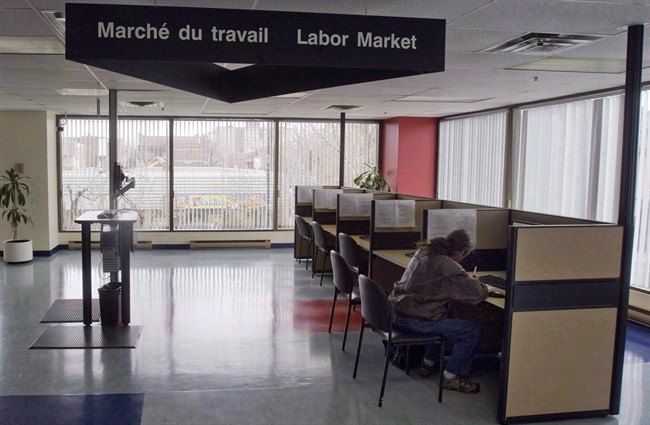- 23 per cent of unemployed Ontarians have been out of work for 27 weeks or more.
- 32 per cent of those working part-time would prefer full-time work.
- 28 per cent of Ontario’s unemployed receive EI.

Ontario’s labour dysfunction is more than a recessionary ripple effect, a new paper finds: It’s been more than a decade in the making.
If you’re working, you’re more likely to be underemployed; if you’re unemployed, your chances of being unemployed for a long time have grown even as the percentage of jobless people covered by EI shrinks.
‘It’s been a slow-moving train’
Canadian Centre for Policy Alternatives economist Kaylie Tiessen set out to study the recession’s impacts on Ontario workers. She quickly realized she’d have to alter her time frame.
“It’s been a slow-moving train that’s been coming for some time,” she said.
Many of the trends she found date back to the turn of the century.
The hollowing out of manufacturing and rise of the service industry are perhaps the most well-known among them.
- ‘Pretty scary’: Ill Ontario man stranded in Costa Rica finally recovering in Canada
- S&P/TSX composite down, U.S. markets mixed ahead of tech earnings and economic data
- 1 deal falls through but Toronto FC completes another in Derrick Etienne Jr. trade
- Big warm-up to follow blast of cold air in southern Ontario
READ MORE: 5 occupations in high demand amid Canada’s surprising job losses
Working part time – but not by choice
But Tiessen also found, as the growth of part-time and temporary work swiftly outpaced the growth in full-time and permanent work, a 43 per cent increase in the number of part-time workers who’d rather be working more – an indicator of underemployment or precarious employment that doesn’t show up in unemployment rates.
In 2013, almost a third of Ontarians working part time (32 percent) would rather work full time. That’s significantly higher in Ontario than the rest of Canada – the inverse of what this looked like 14 years ago.
McMaster University labour studies professor Wayne Lewchuk has found precarious employment and the financial uncertainty it creates can be bad for your health but also strain communities as a whole.
Out of work, for longer
And the amount of time Ontarians spend without a job has grown: Almost a quarter of the province’s unemployed (23 per cent) have been that way for 27 weeks or more, Tiessen’s study finds. That’s 75 per cent higher than 2009.
That’s worrying news given previous studies that have shown the longer you’re out of work, the harder it is to break back into the workforce. Skills and connections go stale; you’re much more likely to depend on government assistance for much longer. And, if that runs out, people eat into their savings.
The OECD urged Canada last year to make targeting long-term unemployment a priority.
But the federal government’s recent changes to EI, which penalize those who need it more frequently, ignores the OECD’s warning, this paper says, and “will likely increase unemployment hardship and cause further detachment from the labour market.”
READ MORE: Where do you set the minimum wage?
A working plan for better work
So what’s Tiessen’s prescription for policy-makers with a “job creation” mantra?
“We need to sit down and come up with a long-term plan and a long-term vision of what it looks like to create goos jobs in Ontario,” she said.
That includes ensuring communities have the infrastructure and the educated workforce to attract employers who will pay good wages and stick around. She points to Kitchener-Waterloo, which over the past several years has made itself a technology hub beyond its now-flailing marquee investor, Blackberry.
READ MORE: Would RIM’s demise spell Waterloo’s doom? Unlikely
“They’ve been investing in the high-tech sector for decades, and … it’s helping to grow the industry there,” she said.




Comments